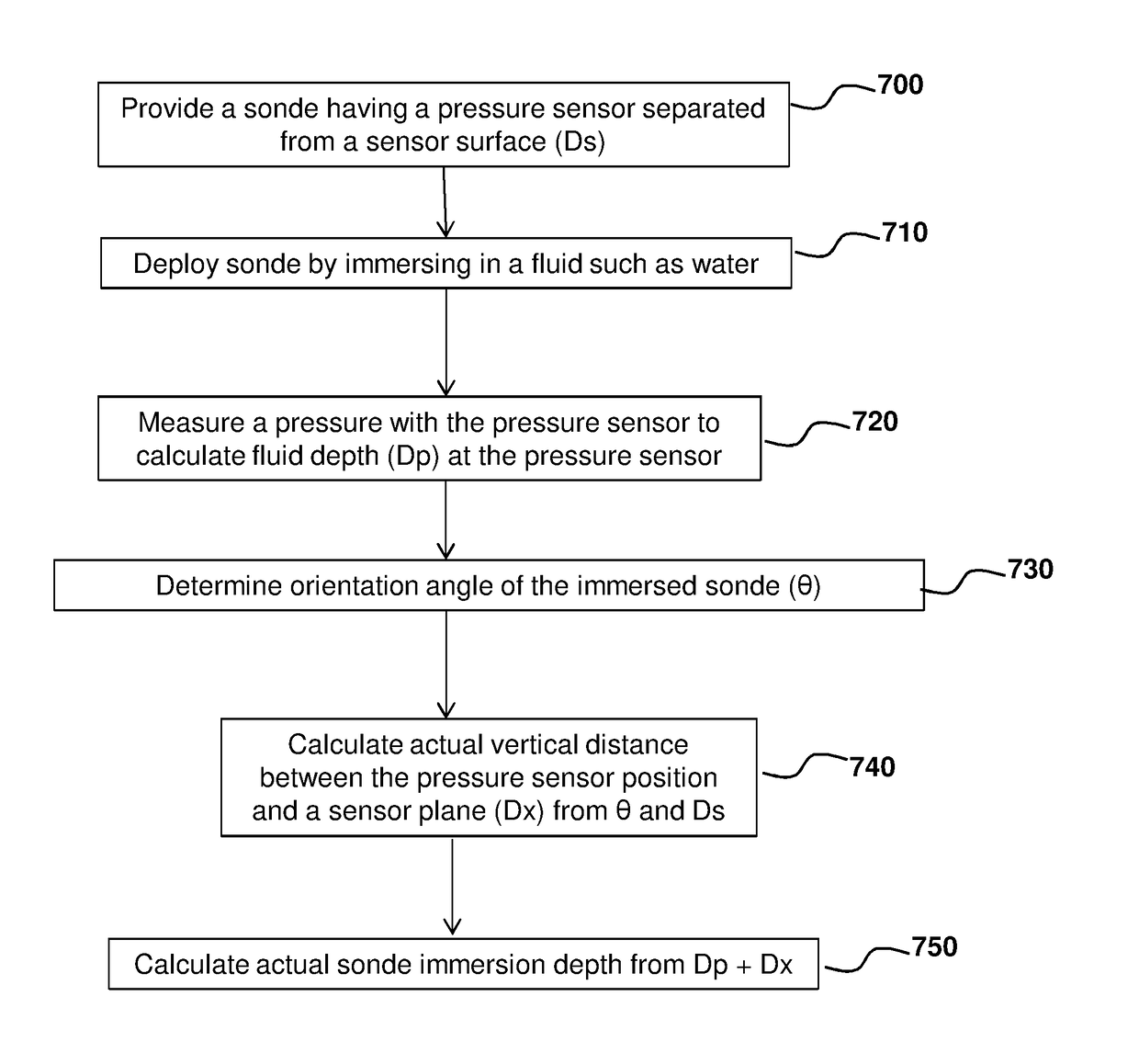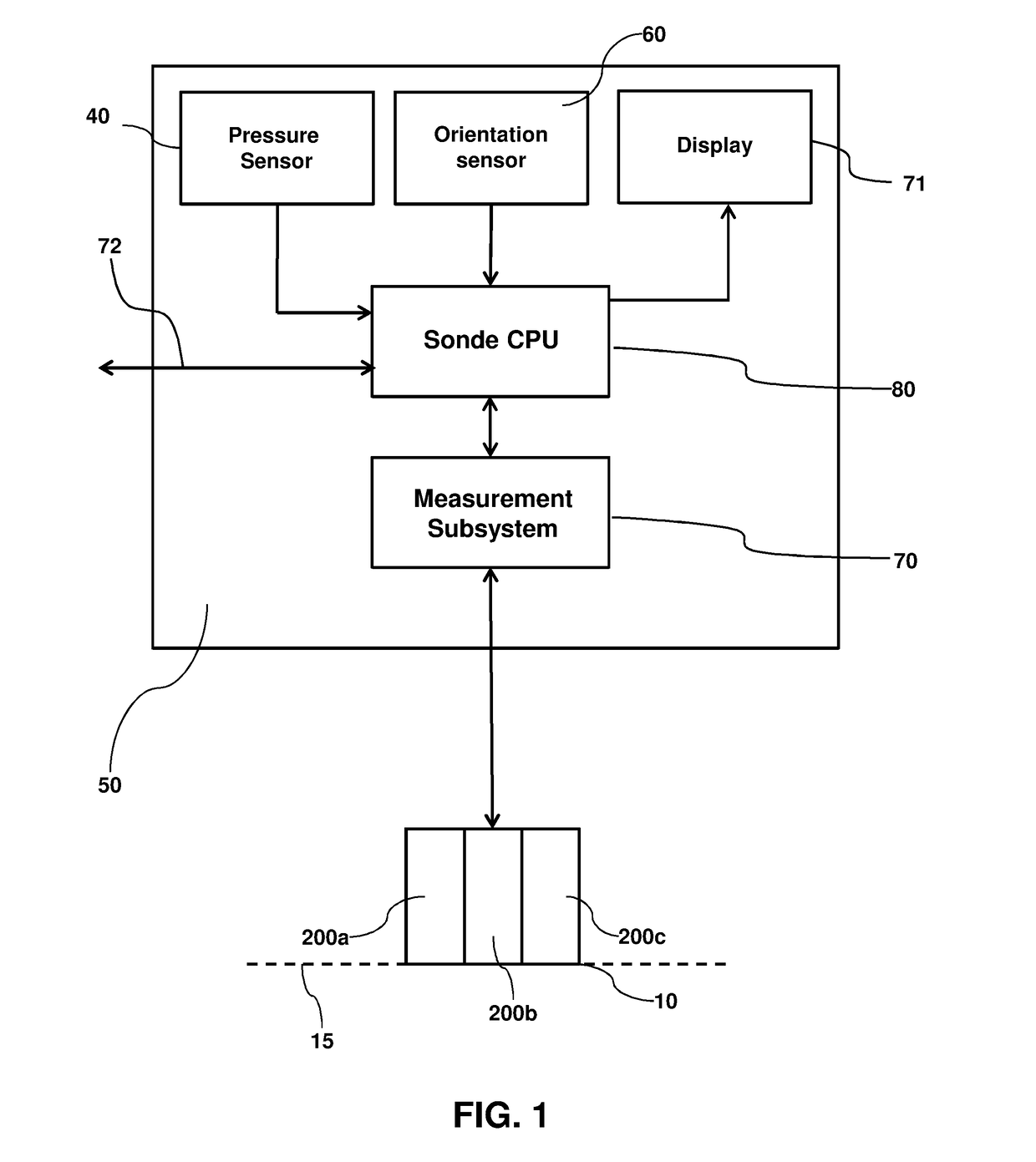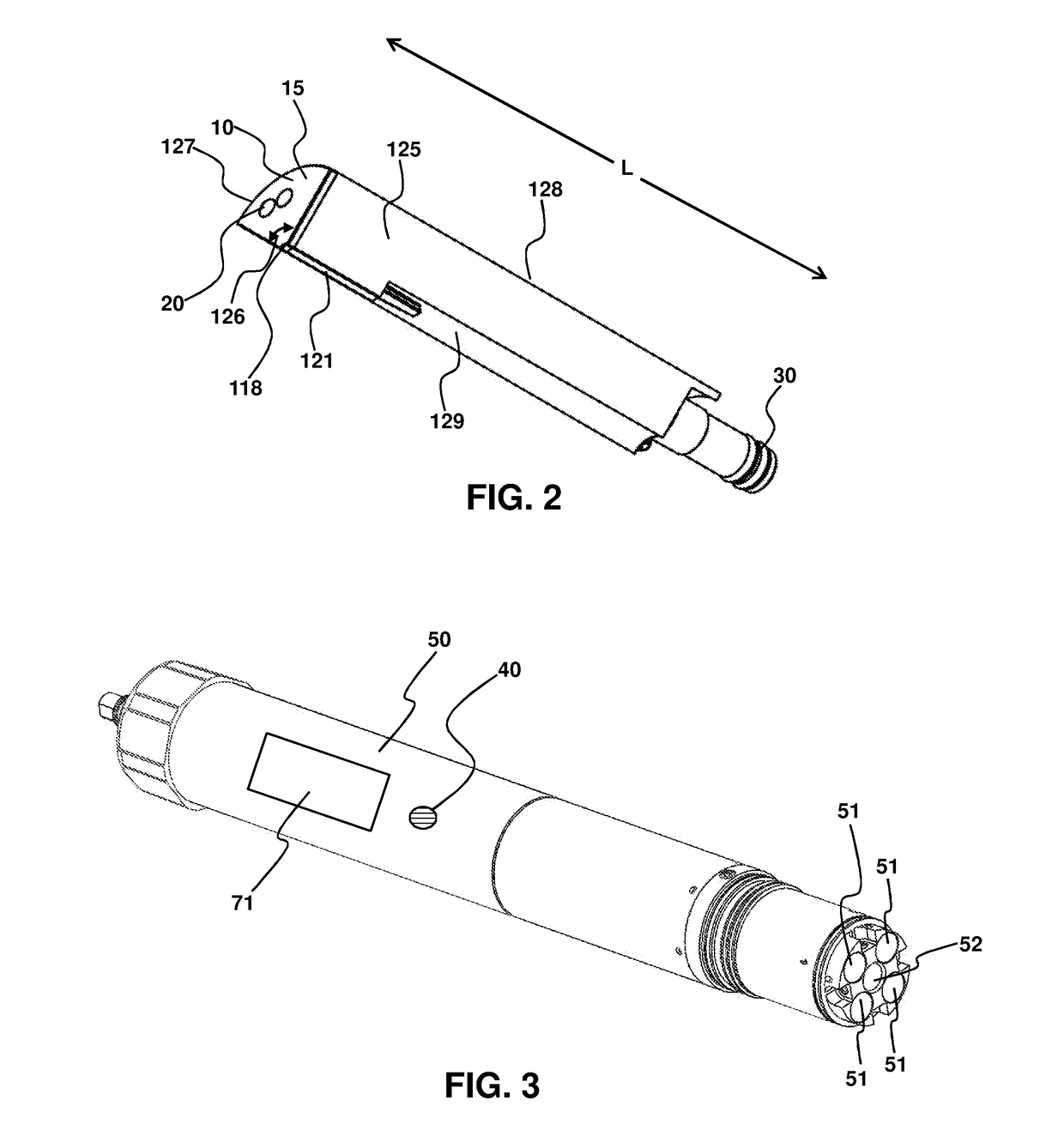Sonde having orientation compensation for improved depth determination
a technology of orientation compensation and depth measurement, which is applied in the direction of measurement devices, instruments, scientific instruments, etc., can solve the problems of small percentage error in depth measurement, small error at smaller depths, and limited application, so as to facilitate the removal of pressure sensors and free up space for other sensors. , the effect of long deployment times
- Summary
- Abstract
- Description
- Claims
- Application Information
AI Technical Summary
Benefits of technology
Problems solved by technology
Method used
Image
Examples
example 1
h Pressure Sensor in the Body Separated from a Sensor Plane
[0044]FIG. 1 provides a block diagram of a sonde with the pressure sensor 40 in the base 50 of the sonde to allow for additional sensors 200abc, with each distal end 10 of the sensor together forming the sensor plane 15 along the distal sensing surface. To distinguish from sensors 4060 in the sonde base 50, sensors 200a 200b 200c are also referred herein as longitudinally-extending or longitudinal sensor to emphasize the sensor plane 15 separated relative to the base. The sonde base 50 may contain a pressure sensor 40 and an orientation sensor 60. The base 50 is operably connected to at least one sensor, here represented by three sensors as 200a, 200b, and 200c. The three sensors form a sensor plane 15 as indicated by the dashed line along the distal sensing end 10 of the sensors. The sensors 200abc, the pressure sensor 40, and the orientation sensor 60 all provide data to a central processing unit (CPU) 80, optionally this ...
example 2
[0048]In ideal conditions, the sonde may be deployed such that it is perpendicular to the surface of the water and the base and sensor units are vertically aligned as illustrated in FIG. 5. In these conditions, determining the actual depth, D, of the sensor plane is straightforward. The pressure sensor 40 uses hydrostatic pressure to determine its depth relative to the water surface, Dp. Because the base and sensors are vertically aligned, the depth of the sensor plane with respect to the depth of the pressure sensor, Ds, is merely the length of the sensors 200 plus the length of the base between the pressure sensor 40 and the connection point between the sensor and the base. Thus, the depth of the sensor plane D is merely the sum of Dp and Ds. As desired, pressure and depth may be determined from each other, such as by the hydrostatic equation for pressure, P=ρgh, where ρ is fluid density, g is the acceleration due to gravity, and h is the fluid depth.
example 3
an Offset-Orientation During Use
[0049]In practical deployment, the sonde is often not in perfect vertical alignment due to external factors such as water current, trolling along the water surface, such as by a moving boat, touching the bottom surface, or protrusions from the bottom surface. FIG. 6 illustrates a sonde that is deployed at an angle 8 #90°, whereas in FIG. 5θ=90°. In this situation, adding Dp and Ds no longer accurately provides the depth of the sensor plane. Instead, the orientation angle, θ, is necessary to calculate the actual depth which may be determined using an orientation sensor 60, for example, a digital three-axis accelerometer.
[0050]In this situation, the actual depth of the sensor plane, D, is defined by the relationship Dp+Dx where Dx=Ds sin θ, so that in FIG. 5, for θ=90° Dx=Ds, whereas in FIG. 6, Dx≠Ds. The orientation angle, θ, can be measured with an orientation sensor (60), such as a three-axis accelerometer, so that the actual depth of the sonde senso...
PUM
 Login to View More
Login to View More Abstract
Description
Claims
Application Information
 Login to View More
Login to View More - R&D
- Intellectual Property
- Life Sciences
- Materials
- Tech Scout
- Unparalleled Data Quality
- Higher Quality Content
- 60% Fewer Hallucinations
Browse by: Latest US Patents, China's latest patents, Technical Efficacy Thesaurus, Application Domain, Technology Topic, Popular Technical Reports.
© 2025 PatSnap. All rights reserved.Legal|Privacy policy|Modern Slavery Act Transparency Statement|Sitemap|About US| Contact US: help@patsnap.com



